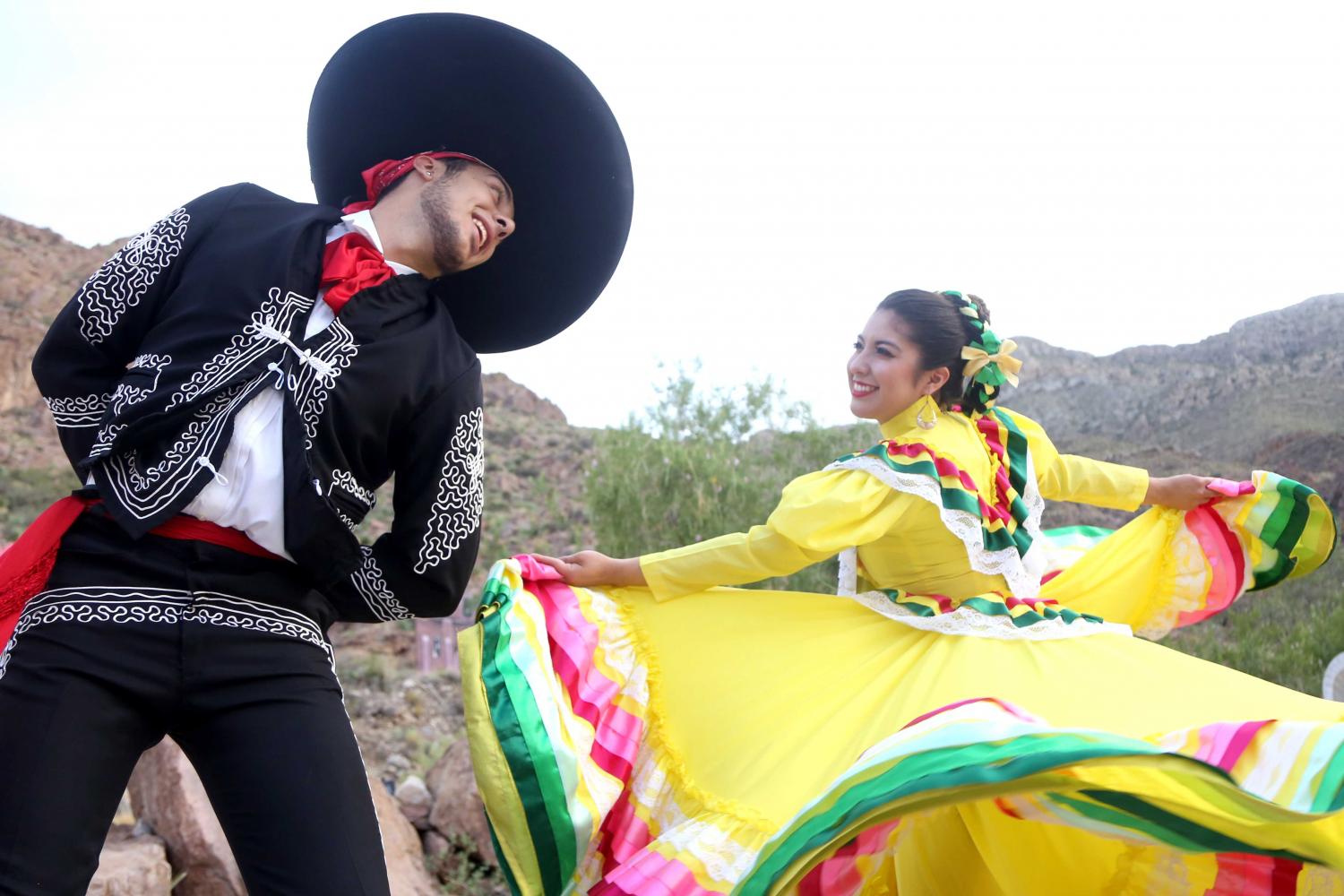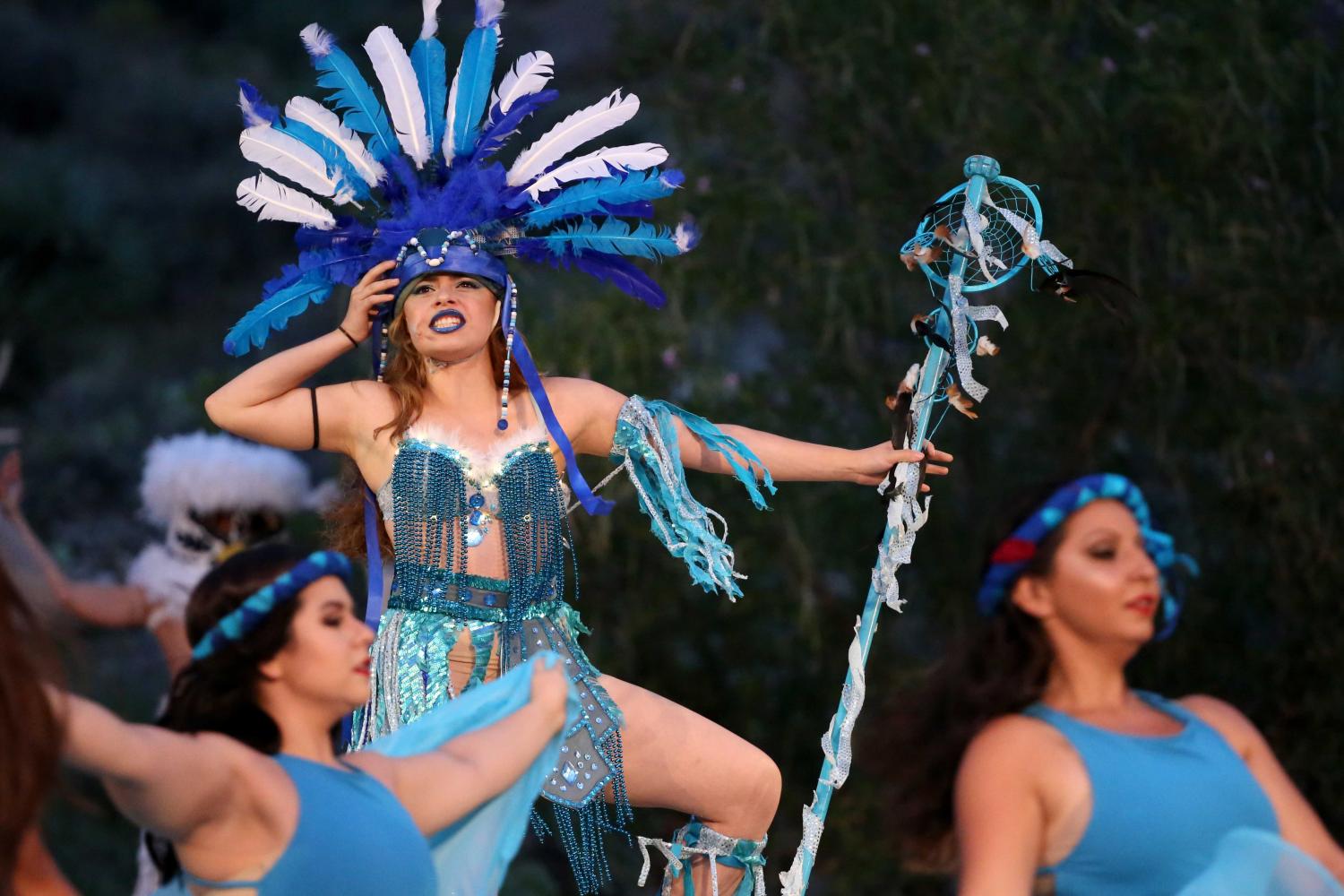Summer in El Paso marks the return of the musical “Viva! El Paso!” For 40 years the McKelligon Canyon Amphitheatre has served as the home for the historical production. This year the production saw some changes in the script and music as El Paso Community College’s Performance Studies Director Keith Townsend took over as artistic director in 2016.
The changes included more dance numbers, but the addition did not lengthen the show. Townsend worked with UTEP film professor, Marty Martin, to streamline the script, making room for more song and dance numbers without lengthening the show.
This year’s iteration of the musical also includes kids from the Viva! Kids! program. The children participated in some of the dances and two scenes. This year also marked the first person with Down’s syndrome to be cast in the musical.
Friday night’s weather was a bit unpredictable and rainy, but the rain didn’t seem to scare people away as the amphitheater still filled up. The show began a bit late and without warning. The show opens in El Paso circa 1881 as Mayor Joseph Magoffin and citizens anticipate the arrival of the railroad to the city. As they wait, they reflect on El Paso through the ages as narrated by the spirits of the elements.
At the start of the show there were microphone problems as. Magoffin’s wife’s mic kept cutting out and the wind kept knocking over actors’ props and clothes. However, everyone carried on acting, unfazed by the interferences.
El Paso’s history is told through a love story over the ages. The story is told in a way as unique as the city itself. This production featured a mix of Spanglish dialogue as well as songs in both English and Spanish.
Erick Canales was the star of the show. He played the male lead over the course of El Paso’s history. It was his vocal talent that carried his performances.
The transition in between scenes consisted of dancers coming out in costumes and doing choreography based on the era the story was transitioning into. A couple of times they used the dancers to not only represent the cultural change, but to help move the main plot along in the background, montage style.
The only comedic relief came from Sean Diaz, who played the boisterous Juan De Oñate, a conquistador from Spain in the mid-1500s. He had a short scene where he wouldn’t stay still and went off on a tangent as he was getting his portrait painted by an artist.
One of the most entertaining scenes of the night was during the time of the Mestizos. It featured a dance battle turned sword fight between Josue (Erick Canales) and the father of the girl he wished to marry, played by Diego Parada. After the battle, the father blesses the marriage and we see the wedding happen in the background of the folklorico (a Mexican folk dance) dancers. Canales and Parada delivered the most thrilling fight scene of the night in this scene.
Out of all the different dances performed, the folklorico was the most visually pleasing as they had the brightest and largest costumes. All of the dancers were graceful in their movements and the females even balanced bottles on their heads through the dance, while the men were incredibly charming and never missed a beat.
Costumes were a standout element of the show. The play incorporated clothes from over 400 years of history. The elements’ costumes were grand and lit up.
The show’s performances seemed to come back stronger in the second act, as well as the choreography.
At the beginning of the second act, they went back to 1881, where the mayor and the citizens were still waiting for the train. The kids also got to sing in the show, singing “De Colores.” Shortly after, the story picked up again from where they left off in the first act.
Another special element to the show was the music. All of the music in the show was performed live. It was all executed well as musicians changed from scene to scene. In some parts of the show, the mariachis served as the band, and in others there was a pianist and a banjo player inside of a saloon playing music along to the scenes.
We also got to see the leads showcase their vocal talent through songs such as “Sing Me Something,” “The Heliotrope Saloon Rag” and “In the Mood.”
Canales also executed a powerful performance of “Despedida,” where he sings about saying goodbye to his loved ones as he prepares to head out to war. The song was sung beautifully and moved the audience to tears as we see the soldier’s lover receive his goodbye letter and break down in the background of Canales’ touching song. It was his impeccable vocal talent that drove the emotion in the song.
Even Texas Western’s 1966 basketball team was given a spotlight in the show. Featuring the late legendary coach Don Haskins and emphasizing the civil rights strides he made not only in the city, but the country.
The show closes off with the train finally arriving in El Paso in 1881 and the whole cast singing to a remix of “La Bamba,” as they’re all dressed in costumes from every historic period that was visited. The closing number even featured new dancers and costumes that came out as the “Viva El Paso!” sign lit up on the canyon
The energy and dedication of the actors was made clear through their ability to move through scenes smoothly and quickly adapt to different characters through the show.
When it came to sound, it was hit or miss as the microphone went out frequently throughout the show. However, the vibrant colors and dance numbers made the production worthwhile and a summer delight El Pasoans should not miss.
The story succeeded in not only presenting the changes that El Paso has gone through over time, but how diverse it has always been. Each era was given a spotlight without having one take a larger part than the other. It was truly a love story to El Paso through the ages.













